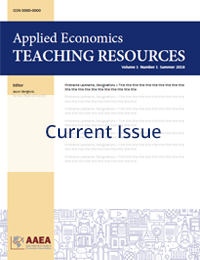Research Article
Risk Management Education for Executives in the Food and Agriculture Industry
Emily Garwood(a) and Brian K. Coffey(a)
(a)Kansas State University
JEL Codes: JEL Codes: A29, D81
Keywords: Executive education, industry outreach, risk management
First Published Online: February 23, 2024
Volume 6
Abstract
Numerous universities have expanded their outreach efforts to include executive education. Offerings include a range of programs that vary in length, certification, topics, and price. Even though there are many offerings, there is a specific gap in the market for risk management executive education for the food and agriculture industry. There is also, to our knowledge, no existing research into preferences and willingness to pay for risk management executive education offerings. Understanding executives’ preferences for risk management executive education programs would be helpful to academic units who wish to enter the space. We conducted an online survey of professionals in the food and agriculture industry, followed by phone or video conference interviews with professionals whose responsibilities included sending employees to executive education programming. Results indicate professionals in the food and agriculture industry highly value the content of a program and the ability to apply it to their business. They seek opportunities with highly regarded speakers with relevant real-life experience. Networking to build lasting relationships in their fields is also an important component. The price a participant is willing to pay for a two- to three-day executive education experience lands somewhere between $1,500 and $2,000.
References
Amdam, R.P. 2020. “Creating the New Executive: Postwar Executive Education and Socialization into the Managerial Elite.” Management & Organizational History 15(2):106–122.
Bachev, H. 2013. “Risk Management in the Agri-food Sector.” Contemporary Economics 7(1):4663.
Crotty, P.T., and A.J. Soule. 1997. “Executive Education: Yesterday and Today, with a Look at Tomorrow.” Journal of Management Development 16(1):4–21.
Freifeld, L. 2022. “2022 Training Industry Report.” Training. Available at https://trainingmag.com/2022-training-industry-report/.
Jacobson, D., R. Chapman, C. Ye, and J. Van Os. 2017. “A Project-Based Approach to Executive Education.” Decision Sciences Journal of Innovative Education 15(1):42–61.
Margulies, N., and J.R. Gregg. 2013. “Strategic Planning for University-Based Executive Education Programs: Success Factorsand Design Alternatives.” Journal of Execuitve Education 1(1):1–11.
Stanton, W.W., and A.D. Stanton. 2017. “Traditional and Online Learning in Executive Education: How Both Will Survive and Thrive.” Decision Sciences Journal of Innovative Education 15(1):8–24.
Tiberius, V., L. Hoffmeister, and M. Weyla. 2021. “Prospective Shifts in Executive Education: An International Delphi Study.” International Journal of Management Education 19(3):100514.
Wu, D.D., S.-H. Chen, and D.L. Olson. 2014. “Business Intelligence in Risk Management: Some Recent Progresses.” Information Sciences 256:1–7.
Articles in this issue
Educational Materials Addressing Industry and Market Developments: Introduction to the Special Issue
David Hall
Demand Dashboards: Interactive Tools to Communicate Consumer Behavior
Justin D. Bina and Glynn T. Tonsor
Risk Management Education for Executives in the Food and Agriculture Industry
Emily Garwood and Brian K. Coffey
Expanding Beyond Case Studies in Postgraduate Agribusiness Teaching to Enhance Experiential Benefits and Student/Teacher Outcomes
Alexandra Peralta, Craig Johns, and Adam Loch
Teaching The Economics of Corporate Social Responsibility: A Mixed Motive Bargaining Simulation Game
Anukul Bhattari and George C. Davis
Minority-Owned Agricultural Businesses and Challenges with the Paycheck Protection Program: Seeking Ways to Reach Farmers
Kevin Kim, Ana Claudia Sant’Anna and Iryna Demko
A Case Study on the Home Cooking Movement—Legalization, Market, and Competition
Suraj Gurung, Jonathan Ritacco, Lijun Angelia Chen and John Lai
Applied Economic Models of Commodity and Input Markets to Assess Prices, Quantities, Farm and Other Input Supplier Impacts, and Consumer and Taxpayer Costs
Joe Dewbre, Wyatt Thompson, Sera Chiuchiarelli
Unraveling the Reintroduction of Hemp in the United States: A Case Study of the Supply and Demand During the (Re)Birth of an Industry
Jonathan D. Shepherd, Rebecca Hill, William Snell, Tyler Mark, Jane Kolodinsky and Hannah Lacasse


